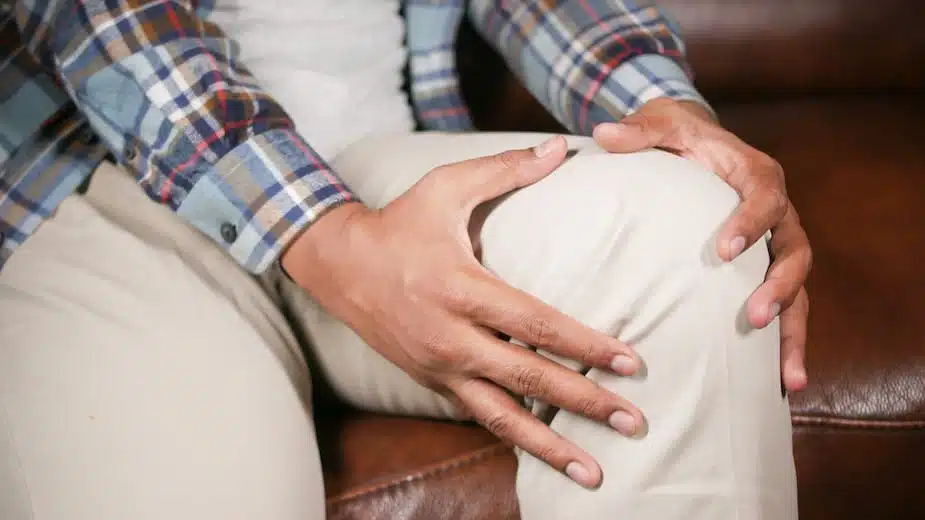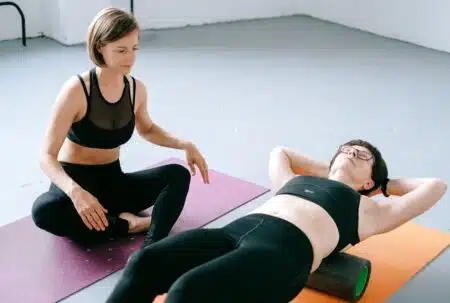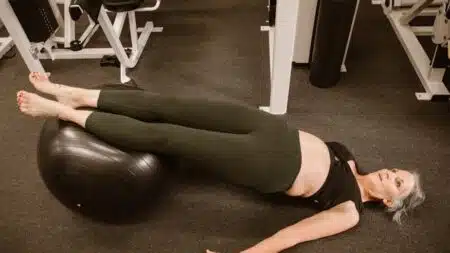If you’re suffering from knee pain, you’re not alone. An estimated 19 million Americans are impacted by this common complaint. From sudden injuries to chronic arthritis, there are many causes of knee discomfort. Fortunately, there are also a variety of treatment options to find relief – from at-home care to surgery.
By understanding the symptoms, causes and risk factors for knee pain, you can take steps toward prevention. And when pain does occur, multiple solutions exist to restore comfort to your joints. Read on to learn about embracing knee pain relief.
The Anatomy Behind Knee Pain
Your knees endure significant daily wear and tear. As the largest joint in the body, the knee handles the brunt of walking, running and jumping activities. Structurally, the knee joint contains:
- Bones – the thigh bone (femur), shin bone (tibia) and kneecap (patella) come together to enable bending capabilities.
- Cartilage – this rubbery substance between the bones acts as a shock absorber and cushion.
- Tendons – tissues that connect muscles to bones. The quadriceps muscles in front and hamstring muscles in back are key.
- Ligaments – these elastic bands provide stability by attaching bones together. The four main ligaments are the ACL, PCL, MCL and LCL.
This complex interplay of anatomy allows for a remarkable range of flexion and extension. It’s also why the balancing act of structures in the knees is easily disrupted, resulting in pain.
Common Signs of Knee Pain
Knee pain can manifest in many different ways. Being attuned to your symptoms helps identify the potential cause and suitable treatments. Some hallmark signs include:
- Swelling around the knees
- Joint stiffness, tightness or limited mobility
- Warmth and redness indicating inflammation
- Weakness, instability or a sensation the knee may “give out”
- Popping, crunching or grinding noises
- Inability to fully straighten the leg
Sudden onset of severe knee pain, inability to bear weight on the joints, or knee problems combined with fever or trauma also warrant prompt medical evaluation.
Causes of Knee Discomfort
There is an array of underlying reasons why knee discomfort develops, generally falling into four categories:
Category 1 - Injuries
Knee injuries can affect any of the tissue structures surrounding and supporting these central joints. Typical damages include:
- ACL tears – complete or partial rips of the anterior cruciate ligament
- Fractures – breaks in the kneecap, thigh or shin bones
- Meniscus tears – ripped cartilage, often from suddenly twisting with weight on the joint
- Knee bursitis – inflamed fluid-filled sacs causing friction between areas of the knee
- Patellar tendinitis – swollen and irritated tendons connecting to the kneecap
Injuries vary in severity but often cause sudden pain, swelling, or the knee “giving out.” Prompt treatment is key to preserve future knee function.
Category 2 - Mechanical Issues
Sometimes altered mechanics in how the joint structures interact result in knee troubles. This may include:
- Loose bodies – broken off fragments of bone/cartilage floating in the knee space
- Iliotibial band syndrome – tightness and inflammation of the IT band outside the hips/knees
- Dislocations – when the kneecap slips out of normal alignment
- Hip/foot pain – limping to spare another area transfers more stress onto the knees
These mechanical problems produce knee discomfort and changes to range of motion. They require correcting the underlying biomechanical imbalance.
Category 3 - Arthritis
Arthritis causes progressive joint damage over time. The types most likely to impact knees are:
- Osteoarthritis – wear-and-tear “degenerative” arthritis eroding knee cartilage. It frequently comes with age.
- Rheumatoid – inflammatory autoimmune condition attacking multiple joints. Knees often get involved.
- Gout – uric acid crystal buildup inside knees creates sudden, painful flares.
- Pseudogout – calcium crystal deposits trigger arthritis-like knee attacks.
Arthritis leads to chronic knee stiffness, swelling after activity, creaking/crunching sensations and worsening mobility. Early treatment helps slow progression.
Category 4 - Other Knee Problems
Additional conditions producing knee pain include:
- Patellofemoral syndrome – discomfort originating from the kneecap and thighbone
- Baker’s cysts – fluid-filled lumps growing behind the knee, causing swelling/tightness
- Bursitis – inflamed fluid sacs rubbing on knee bones
- Chondromalacia patellae – softening and damage under the kneecap surface
Depending on the issue causing distress, solutions range from physical therapy to injections or surgery if more conservative rehabilitation fails to help.
Are You At Risk for Knee Pain?
A number of risk factors make individuals more prone to developing knee troubles:
- Obesity – excess weight taxes joints, instigating osteoarthritis and pain
- Poor flexibility – tight muscles/tendons contribute to injury risk
- Muscle weakness – strong thighs and hamstrings help stabilize knees
- High-impact activities – certain sports place more demands on knees
- Past knee injury – prior damages increase reinjury likelihood
- Intense training errors – quickly ramping up mileage/intensity heightens vulnerability
- Occupations requiring repetitive knee stress – construction, farming, mining, etc
Being mindful of these risk factors allows you to take preventative precautions. When advancing age or other aspects outside your control increase susceptibility to knee pain, early intervention becomes key.
Finding Knee Pain Relief
If you’re currently contending with knee discomfort, take comfort knowing multiple effective treatment routes exist. Depending on the degree of pain and exact diagnosis, solutions range from simple measures at home to medical interventions.
Home Remedies
Milder knee irritation often improves through at-home care tactics such as:
- RICE method – applying Rest, Ice, Compression and Elevation calms inflammation
- Over-the-counter meds – NSAID pain relievers like ibuprofen/naproxen alleviate discomfort
- Heat/cold therapy – alternating hot and cold packs stimulates healing blood flow
- Supportive braces – worn during activity, unloader braces takes pressure off knees
- Exercise – low-impact moves strengthen muscles supporting joints without further aggravating knees
Avoiding activities that worsen pain allows home treatments to promote recovery. When home care plateaus, professional treatment may be warranted.
Physical Therapy
Customized PT programs help many knee pain suffers regain comfort and function. Through techniques including:
- Gentle joint mobilization stretches
- Progressive strength training
- Neuromuscular re-education for proper movement patterns
- Modalities like ultrasound, TENS, heat/ice therapy
- Instruction on ideal biomechanics
PT also provides supportive knee braces, taping, activity modification guidelines and continued education on optimal injury prevention.
Medical Interventions
More invasive medical procedures aim to tackle knee pain at its source. Potential options include:
- Hyaluronic acid injections to reestablish cartilage cushioning
- Steroid injections reducing inflammation
- Platelet-rich plasma therapy to stimulate tissue healing
- Water flushing of the knee to clean out debris
- Surgery to repair/remove damaged structures or install knee replacements
For moderate-severe injuries, severe arthritis or when more conservative care fails to resolve recurring knee pains, consult an orthopedic specialist. Advanced diagnostics like MRI evaluate the joints while considering surgery or specialty injections tailors treatment to the exact location, degree and causes underlying knee troubles.
Preventing Knee Pain
Implementing preventative strategies minimizes risk for developing knee discomfort and injuries in the first place:
- Maintain healthy weight – every extra pound strains joints unnecessarily
- Improve flexibility – gentle stretching keeps muscles/tendons supple
- Strengthen muscles – strong quads/hamstrings better brace knees
- Use proper exercise form – good technique minimizes injury risk
- Consider lower-impact activities – biking, swimming, elliptical spare knees
- Rest/vary workouts – listen to warning pains indicating overexertion
- Wear supportive shoes/braces – absorb impact shocks properly
Paying attention to sensible training and lifestyle habits goes a long way toward knee comfort. When twinges of pain do emerge, promptly addressing minor issues prevents major ones down the road.
Embracing Comfort for your Knees
If you’re currently facing knee troubles, comprehensive solutions spanning conservative care to advanced interventions provide paths to lasting relief. With an accurate diagnosis guiding targeted treatment, most knee conditions can be effectively resolved or managed for restored comfort.
Prioritizing knee health through preventative strategies also helps you steer clear of pains to remain active. By maintaining strength with flexibility, managing weight, using proper form and varying low-impact activities, you’ll keep your knees feeling fabulous for years to come.
Here’s to embracing open roads of movement by keeping knee pain at bay! With an appreciation for this complex joint and the right solutions at the ready, you can continue confidently going the distance on two steady legs.



